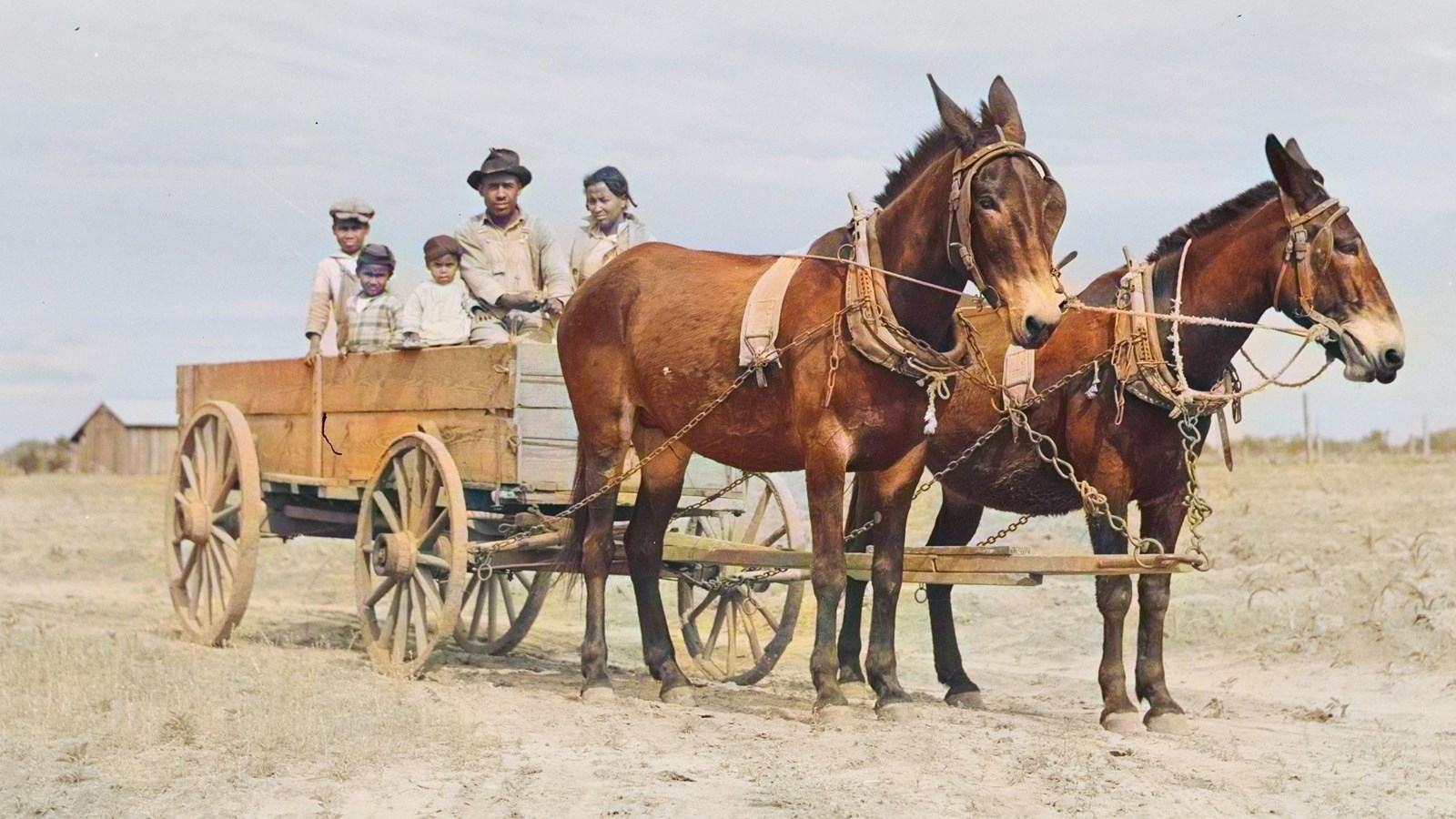Last updated: March 13, 2025
Place
Catch the Mules Wayside

Library of Congress
Historical/Interpretive Information/Exhibits
Here, at the barn, the day started early.
"All the workers arose each morning at 4:00 a.m…, wakened by the ringing of a large farm bell. We would go to the barn and catch the mules by lan-tern light, put the plow stocks, seed, fertilizer, and other supplies on the wagons, and drive out to the field where we would be working that day… and wait for it to be light enough to cultivate."
- Jimmy Carter, 1975 Why Not the Best?
Before World War II, mules—not a gasoline-driven tractor— provided the “horsepower” needed to farm in South Georgia.
Early forms of transportation were by foot, horse, mule, and wagon.
-
Outside Barn
The barn was the heart of the Carter family farm, where both work and play came together. Each day, the mules and horses were taken to the fields, and at night, they returned for feeding and watering. The barn also served as a place for fun, with haylofts perfect for jumping into soft piles of hay after threshing oats and wheat. Jimmy Carter shared this farm with his African American neighbors, like Johnny and A.D., with whom he worked, played, and learned.
